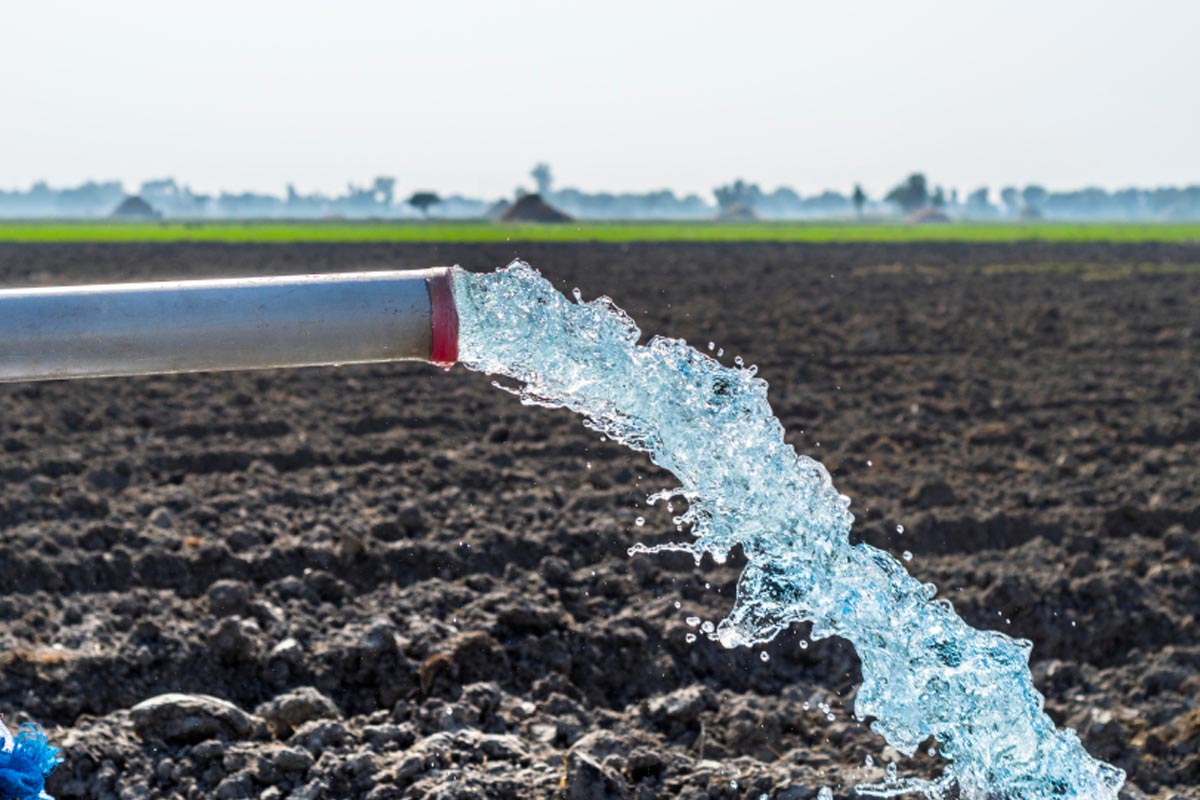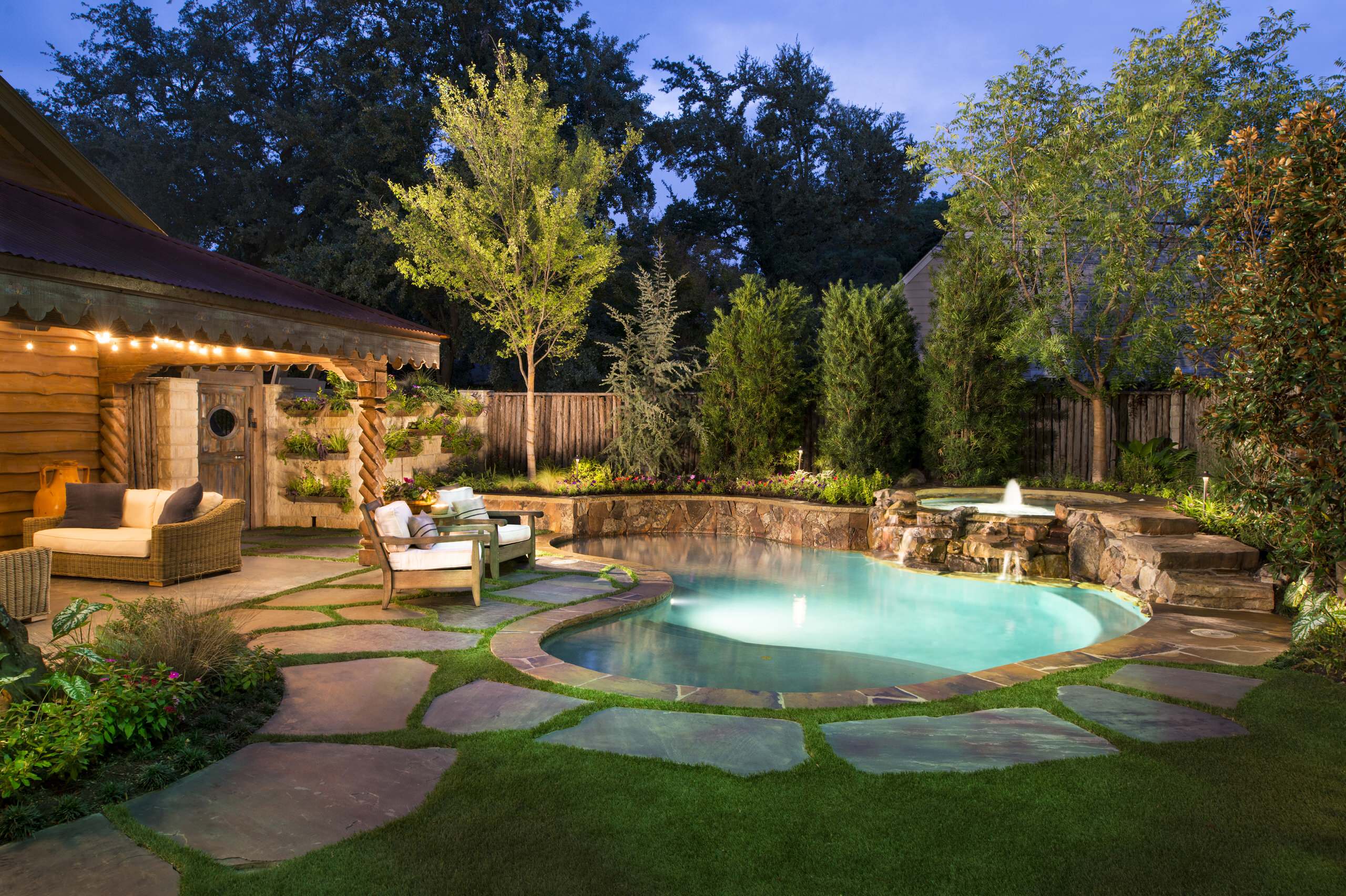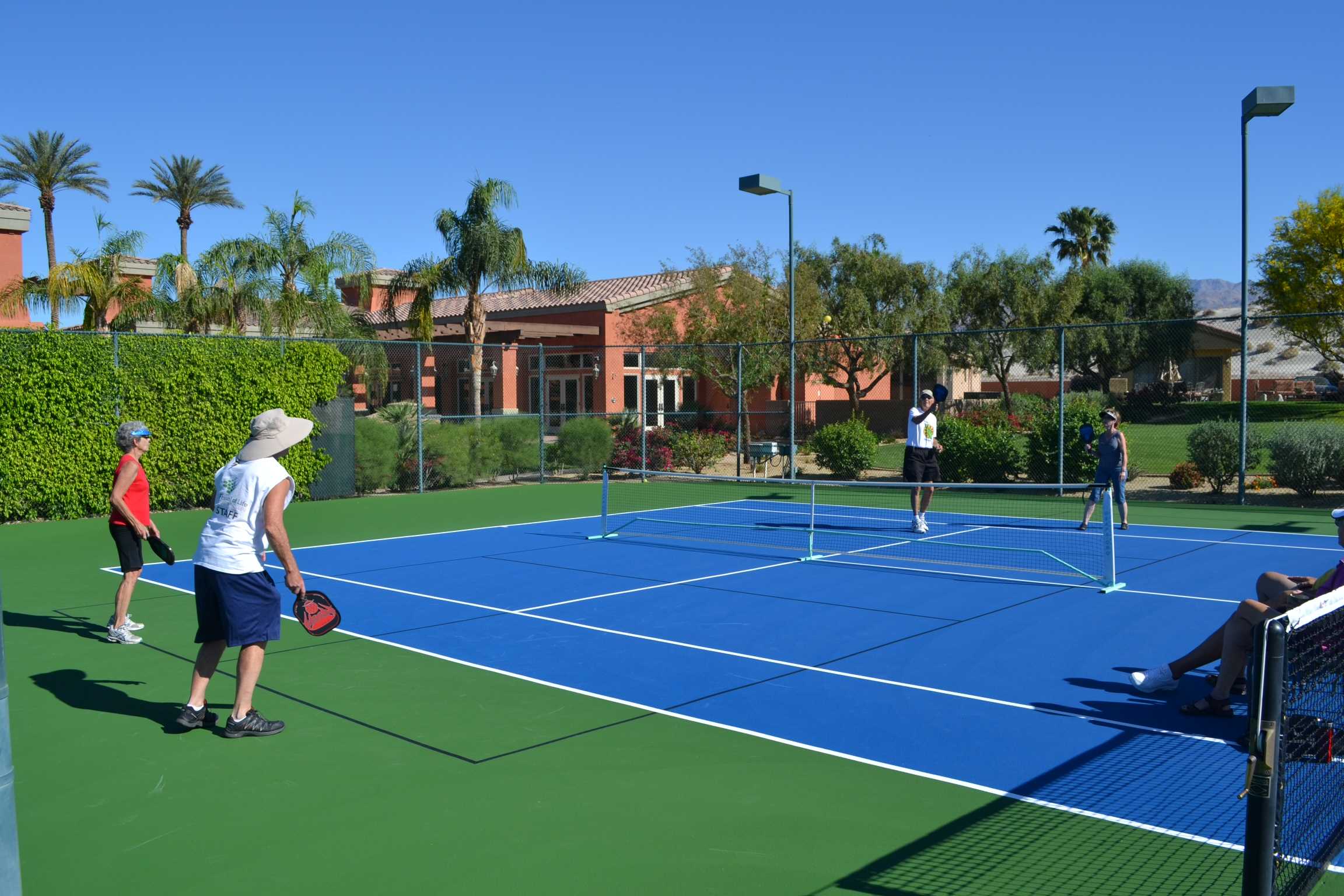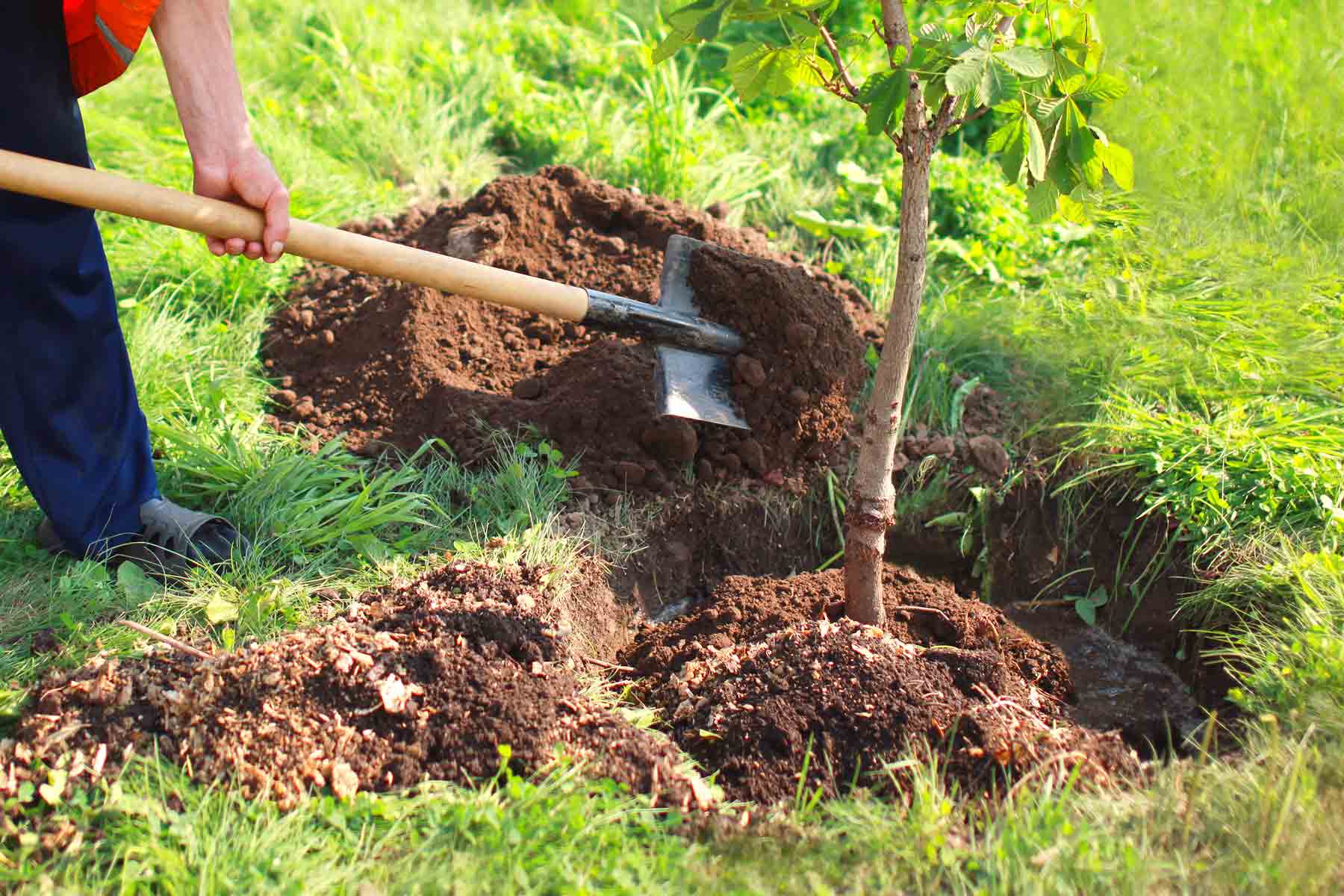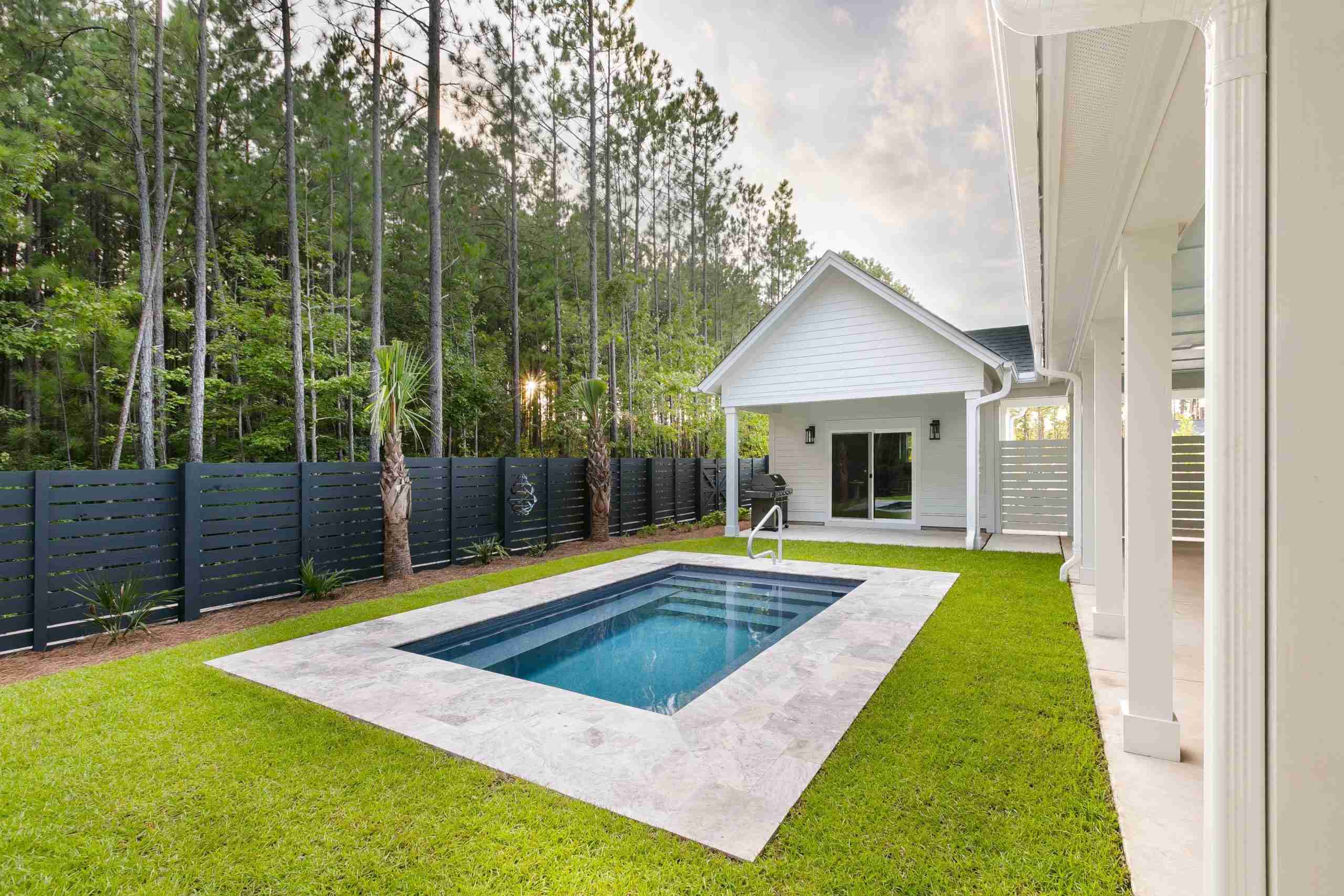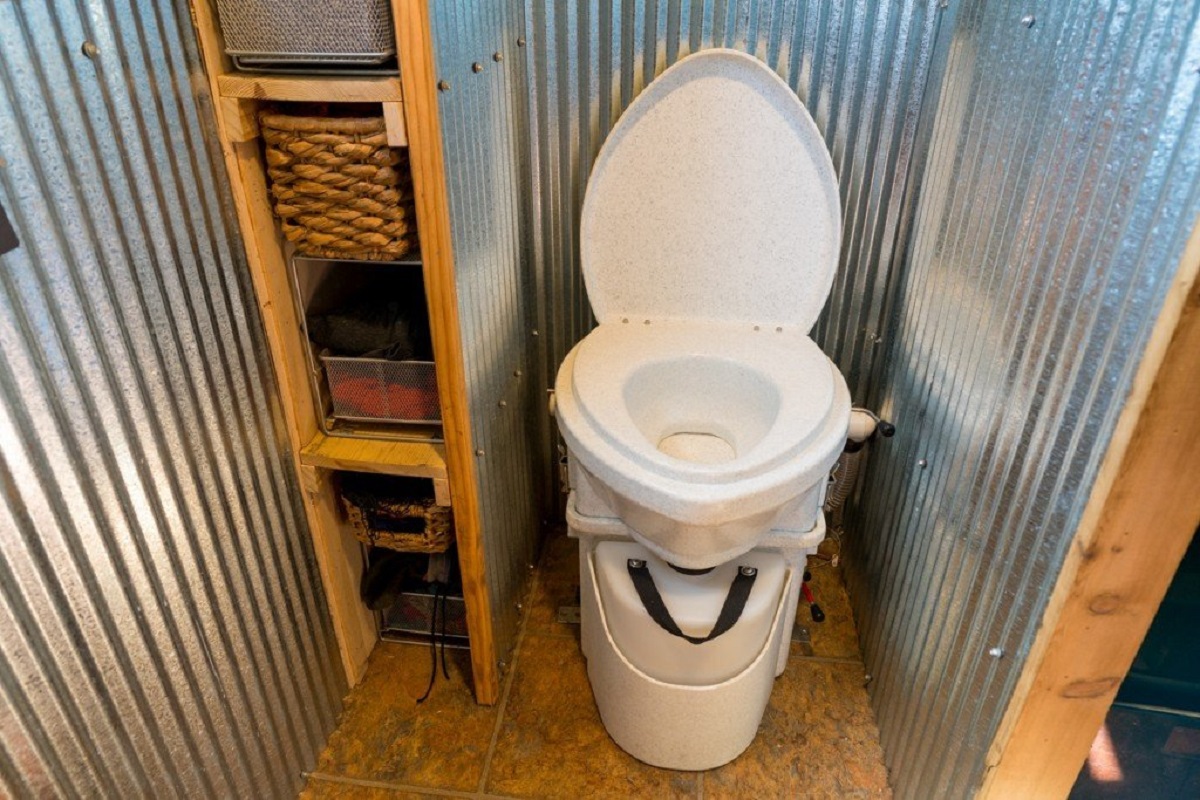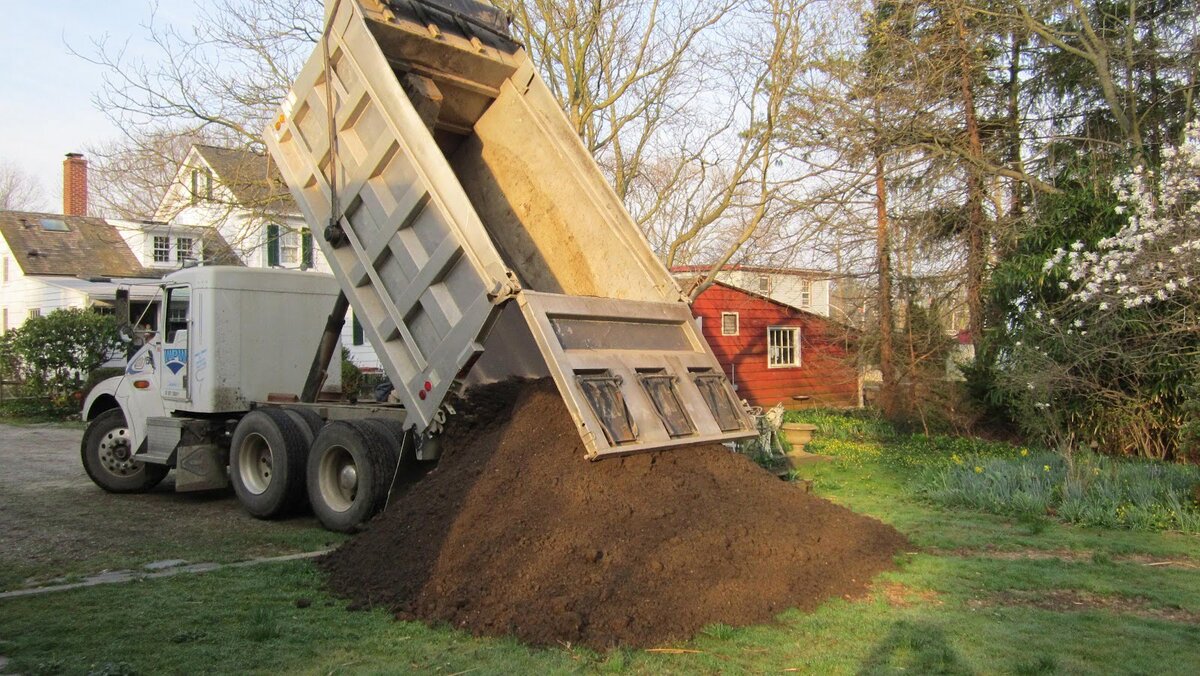Home>Garden Design>How Much Does A Backyard Basketball Court Cost


Garden Design
How Much Does A Backyard Basketball Court Cost
Modified: January 22, 2024
Looking to incorporate a backyard basketball court in your landscape design? Find out the cost factors and budget required for this exciting addition.
(Many of the links in this article redirect to a specific reviewed product. Your purchase of these products through affiliate links helps to generate commission for Chicagolandgardening.com, at no extra cost. Learn more)
Table of Contents
- Introduction
- Factors Affecting the Cost of a Backyard Basketball Court
- Construction Options for Backyard Basketball Courts
- Concrete Court Costs
- Asphalt Court Costs
- Modular Court Costs
- Surface Material Options and Costs
- Additional Features and Accessories for Backyard Basketball Courts
- Maintenance and Long-term Costs
- Conclusion
Introduction
Welcome to the world of landscape design! If you are a homeowner who loves sports, having a backyard basketball court can be a dream come true. Not only does it provide a designated space for practicing your basketball skills, but it also becomes a focal point for family gatherings and friendly competitions.
However, before you start planning your own backyard basketball court, it’s essential to understand the factors that influence its cost. Building a basketball court involves various considerations, including the construction materials, size, surface materials, additional features, and long-term maintenance. By understanding these factors, you can make informed decisions and create a court that suits your budget and needs.
In this article, we will explore the different elements that affect the cost of a backyard basketball court. We will delve into the various construction options available, including concrete, asphalt, and modular courts. Additionally, we will discuss the cost implications of different surface materials and accessories that can enhance your court. Lastly, we will touch on the long-term maintenance costs associated with owning a backyard basketball court.
By the end of this article, you will have a comprehensive understanding of the financial considerations involved in creating a backyard basketball court. So let’s dive in and discover the possibilities of turning your backyard into a sports haven!
Factors Affecting the Cost of a Backyard Basketball Court
Several factors come into play when determining the cost of a backyard basketball court. It’s important to consider these factors carefully as they can significantly impact your budget and overall project. Here are the key factors that influence the cost:
- Size: The size of the court is one of the primary factors affecting the cost. A larger court will require more materials, labor, and time to build, thus increasing the overall expense. Additionally, factors such as the topography of your backyard and the available space will determine the maximum size that can be accommodated.
- Construction Materials: The choice of construction materials will also impact the cost of your basketball court. The most common materials used are concrete, asphalt, and modular systems. Each material comes with its own set of advantages and costs. For example, concrete and asphalt provide a more permanent and durable solution but tend to be more expensive, while modular systems offer flexibility and lower installation costs.
- Surface Materials: The surface material you choose for your court will affect both the cost and performance. Options such as acrylic, rubber, and wood have different price points and require varying levels of maintenance. Acrylic surfaces are popular for their durability and performance, but they tend to be more expensive compared to rubber or wood surfaces.
- Additional Features: Incorporating additional features into your backyard basketball court can elevate the overall experience but also increase the cost. Features like lighting systems, fencing, court markings, and equipment storage can enhance safety and convenience, but they will add to the project’s expenses.
- Labor Costs: The cost of labor is another significant factor to consider. Hiring professionals to construct your basketball court ensures a high-quality installation, but it will come at a higher cost. On the other hand, a DIY approach can save money, but it requires a considerable amount of time, effort, and expertise.
It is important to note that these factors are interconnected, and your choices in one area may impact the costs in another. For example, opting for a larger court will increase material and labor costs, while selecting more expensive surface materials can result in a higher overall cost.
Prioritizing your needs and budgetary constraints will help you make informed decisions and strike a balance between cost and quality. By understanding the various factors affecting the cost of a backyard basketball court, you can proceed with confidence and create a court that meets your desires within your budget.
Construction Options for Backyard Basketball Courts
When it comes to constructing a backyard basketball court, you have several options to consider. Each option has its own advantages and cost implications, so it’s essential to evaluate them carefully before making a decision. Here are the main construction options available:
- Concrete Courts: Concrete is a popular choice for backyard basketball courts due to its durability and long lifespan. It provides a solid and stable playing surface that can withstand heavy use and harsh weather conditions. Concrete courts generally require professional installation, involving excavation, reinforcement, and pouring of the concrete. While concrete courts offer excellent performance and longevity, they can be more expensive compared to other options.
- Asphalt Courts: Asphalt is another common construction material for backyard basketball courts. Like concrete, asphalt offers durability and can withstand heavy use. It provides a smooth playing surface and can be installed by professionals. Asphalt courts are often more affordable than concrete, making them a popular choice for homeowners on a budget.
- Modular Systems: Modular basketball court systems have gained popularity in recent years due to their versatility and ease of installation. These systems consist of interlocking tiles or panels that can be fitted together to create a customizable court. Modular systems offer flexibility in terms of size, design, and surface materials. They are relatively easy to install and can be done without professional assistance, saving on labor costs. However, it’s worth noting that modular systems may not be as durable as concrete or asphalt, and they may have limitations in terms of longevity.
When considering the construction options, it’s important to assess your specific needs and budget. Factors such as the desired durability, playing surface quality, installation method, and long-term maintenance requirements should be taken into account. Additionally, you may want to consult with professionals or experts in landscape design to get their recommendations based on your specific circumstances.
Remember, each construction option has its own pros and cons, and what works for one homeowner may not necessarily be the best choice for another. By understanding the different construction options available for backyard basketball courts, you can make an informed decision that aligns with your budget, preferences, and long-term goals.
Concrete Court Costs
Concrete courts are a popular choice for homeowners who prioritize durability and longevity. The cost of a concrete backyard basketball court is influenced by various factors, including size, site preparation, labor, and additional features. Here’s a breakdown of the key cost considerations:
- Size: The size of the court is a significant factor in determining the cost. Larger courts require more materials and labor, resulting in higher expenses. Additionally, the topography of your backyard may impact the site preparation, which can affect the overall cost.
- Site Preparation: Proper site preparation is crucial for a successful concrete court installation. It involves excavation, leveling the ground, and installing a suitable base or subgrade. The complexity of the site preparation required will influence the overall cost of the project.
- Material Costs: Concrete is priced per cubic yard, and the amount of concrete needed depends on the size and thickness of the court. The cost of concrete can vary based on factors such as location, supplier, and current market conditions.
- Labor Costs: Hiring professionals for concrete court construction ensures a high-quality installation but comes at a higher cost. Labor costs may vary depending on the expertise and reputation of the contractors. It’s advisable to obtain multiple quotes from reputable contractors to compare prices and ensure a fair deal.
- Additional Features: Adding features such as lighting systems, fencing, court markings, and equipment storage can enhance the functionality and aesthetics of your concrete court. The cost of these additional features should be factored into the budget.
It’s important to note that the cost of a concrete backyard basketball court can vary significantly depending on your location and specific requirements. The prices mentioned below are approximate ranges to give you a rough idea:
- Small-sized concrete courts (20′ x 30′): $6,000 – $10,000
- Medium-sized concrete courts (30′ x 50′): $12,000 – $20,000
- Large-sized concrete courts (50′ x 94′): $20,000 – $40,000+
These estimates include material and labor costs for the court construction only. Additional features and site preparation costs are not included and may add to the final expense.
Keep in mind that these figures are general guidelines and can vary based on your specific circumstances. It’s recommended to consult with professionals and obtain detailed quotes tailored to your project. By considering the size, site preparation, material and labor costs, and any additional features, you can determine a realistic budget for your concrete backyard basketball court.
Asphalt Court Costs
Asphalt courts are a popular choice for homeowners looking for a more affordable option without compromising on durability. The cost of an asphalt backyard basketball court is influenced by various factors, including size, site preparation, material costs, labor, and additional features. Here’s a breakdown of the key cost considerations:
- Size: The size of the court plays a significant role in determining the cost. Larger courts require more materials and labor, resulting in higher expenses. The size of the court will be influenced by the available space in your backyard and your specific needs.
- Site Preparation: Proper site preparation is crucial for a successful asphalt court installation. This includes excavation, grading, and compacting the subgrade. The complexity and condition of the existing site can impact the overall cost of preparation.
- Material Costs: The cost of asphalt is typically calculated per square foot. It can vary based on factors such as location, availability, and current market conditions. The amount of asphalt needed depends on the size and thickness of the court.
- Labor Costs: Hiring professionals for asphalt court construction ensures a high-quality installation but comes at a cost. Labor costs may vary depending on the expertise and reputation of the contractors. It’s advisable to obtain multiple quotes from reputable contractors to compare prices and ensure a fair deal.
- Additional Features: Including features such as lighting systems, fencing, court markings, and equipment storage can enhance the functionality and aesthetics of your asphalt court. The cost of these additional features should be factored into your budget.
It’s important to note that the cost of an asphalt backyard basketball court can vary depending on your location and specific requirements. The prices mentioned below are approximate ranges to give you a rough idea:
- Small-sized asphalt courts (20′ x 30′): $4,000 – $8,000
- Medium-sized asphalt courts (30′ x 50′): $8,000 – $15,000
- Large-sized asphalt courts (50′ x 94′): $15,000 – $30,000+
These estimates include material and labor costs for the court construction only. Additional features and site preparation costs are not included and may add to the final expense.
Remember, these figures are general guidelines and can vary based on your specific circumstances. It’s recommended to consult with professionals and obtain detailed quotes tailored to your project. By considering the size, site preparation, material and labor costs, and any additional features, you can determine a realistic budget for your asphalt backyard basketball court.
Modular Court Costs
Modular basketball court systems have gained popularity in recent years due to their versatility and ease of installation. The cost of a modular backyard basketball court is influenced by various factors, including size, material costs, assembly requirements, and additional features. Here’s a breakdown of the key cost considerations:
- Size: The size of the court is a significant factor in determining the cost. Modular systems offer flexibility in terms of size, allowing you to customize the court based on your space availability and needs. Larger courts will require more materials, resulting in higher costs.
- Material Costs: Modular court systems consist of interlocking tiles or panels made of materials such as polypropylene or PVC. The cost of materials may vary depending on the brand, quality, and surface attributes. Higher-quality materials typically come at a higher price.
- Assembly Requirements: Modular court systems can often be installed without professional assistance, making them a cost-effective option. However, if you choose to hire professionals for assembly, it will add to the overall cost. The complexity of the assembly process and any additional site preparation required will also impact the cost.
- Additional Features: Enhancing your modular court with features like lighting systems, fencing, court markings, and equipment storage can improve functionality and aesthetics. The cost of these additional features should be factored into your budget.
When considering the cost of a modular backyard basketball court, it’s important to note that the price ranges can vary significantly based on the factors mentioned above.
Here are rough estimates to give you an idea of the cost range:
- Small-sized modular courts (20′ x 30′): $3,000 – $6,000
- Medium-sized modular courts (30′ x 50′): $6,000 – $12,000
- Large-sized modular courts (50′ x 94′): $12,000 – $25,000+
These figures represent the cost of materials and assembly for the modular court system only. Site preparation costs and additional features are not included and may add to the final expense.
It’s worth mentioning that modular court systems offer the advantage of flexibility and easy installation. However, they may have a shorter lifespan compared to concrete or asphalt courts. Take into account your long-term plans and priorities when considering the cost and benefits of a modular backyard basketball court.
Keep in mind that these figures are general estimates and can vary based on your specific circumstances. It’s recommended to consult with professionals and obtain detailed quotes that are tailored to your project. By considering the size, material costs, assembly requirements, and any additional features, you can determine a realistic budget for your modular backyard basketball court.
Surface Material Options and Costs
Choosing the right surface material for your backyard basketball court is crucial for performance, safety, and overall aesthetics. Different surface materials offer varying levels of durability, traction, and maintenance requirements. Here are some popular surface material options and their associated costs:
- Acrylic: Acrylic surfaces are known for their excellent performance, durability, and all-weather resistance. They provide great traction and are often used in professional basketball courts. Acrylic surfaces require periodic resurfacing to maintain their playability, and the cost can range between $4,000 to $8,000, depending on the court size.
- Rubber: Rubber surfaces offer excellent shock absorption and are comfortable to play on. They are durable, low-maintenance, and suitable for recreational play. Rubber surfaces can cost between $3,000 to $6,000, depending on the court size.
- Wood: Wood surfaces provide a classic and elegant look, often seen in indoor basketball courts. They offer excellent traction and performance. However, wood surfaces require a higher level of maintenance, including regular sanding, sealing, and refinishing. The cost of a wood surface can vary greatly depending on the type of wood used, but it generally ranges between $6,000 to $10,000 or more.
- Grass/Artificial Turf: Grass or artificial turf can be an option for those looking for a more natural feel. However, grass or turf courts may not provide the same level of performance as other surface materials. The cost of installing a grass or artificial turf court can vary depending on the size and site preparation required.
When considering the surface material for your backyard basketball court, it’s important to assess your specific needs, preferences, and budget. Factors such as durability, performance, maintenance, and visual appeal should be taken into account.
Additionally, keep in mind that the costs mentioned above are approximate ranges and may vary based on factors such as court size, location, material quality, and any additional features or customization options.
It’s recommended to consult with professionals or experts in landscape design to determine the most suitable surface material for your backyard basketball court based on your specific requirements and budget. By understanding the costs and benefits associated with different surface materials, you can make an informed decision that ensures both performance and longevity for your court.
Additional Features and Accessories for Backyard Basketball Courts
Alongside the primary construction of your backyard basketball court, there are various additional features and accessories that you can consider to enhance both the functionality and aesthetics of the space. These features can improve safety, convenience, and overall enjoyment of the court. Let’s explore some popular options:
- Lighting Systems: Installing proper lighting allows you to play basketball even after dark. It enhances safety and extends the usability of your court. LED floodlights or overhead lighting fixtures are commonly used options. The cost of lighting systems can range from a few hundred to a few thousand dollars, depending on the size and type of lighting.
- Fencing: Adding a fence around your backyard basketball court not only defines the playing area but also provides privacy and security. Fencing options include chain link, vinyl, or decorative metal fences. The cost of fencing will depend on the size of the court and the chosen material, ranging from a few hundred to several thousand dollars.
- Court Markings: Court markings are essential for proper gameplay. These include boundary lines, key areas, and three-point lines. You can use paint, decals, or stencils to mark the court. The cost of court markings can vary depending on the complexity and quality of the marking materials.
- Equipment Storage: Having a designated area to store basketballs, hoops, and other equipment can help keep the space organized and extend the lifespan of your equipment. Storage options include lockable storage boxes, wall-mounted racks, or storage sheds. The cost will depend on the type of storage solution you choose, ranging from a few hundred to a few thousand dollars.
- Bleachers or Seating: If you frequently host basketball games or social gatherings, adding seating options like bleachers or benches can enhance the spectator experience. The cost of bleachers or seating will depend on their size, material, and any additional features like shade canopies or backrests.
It’s important to note that the costs mentioned above are approximate ranges, as prices can vary based on factors such as the size of the court, the material quality, and any additional customization options.
Prioritizing the additional features and accessories based on your needs, budget, and intended use of the backyard basketball court is key. It’s recommended to consult with professionals in landscape design who can provide guidance on the most suitable options for your specific circumstances.
By considering the additional features and accessories that align with your preferences, you can create a backyard basketball court that not only meets your playing needs but also provides a comfortable and enjoyable environment for players and spectators alike.
Maintenance and Long-term Costs
When planning a backyard basketball court, it’s important to consider the ongoing maintenance and long-term costs associated with owning and maintaining the court. While these costs may vary depending on factors such as the type of court, surface material, and usage, here are some common maintenance considerations:
- Cleaning: Regular cleaning of your backyard basketball court is essential to maintain its performance and appearance. Sweeping or blowing away debris, removing leaves, and periodically washing the court surface will prevent dirt buildup and ensure a safe playing area. The cost of cleaning materials and equipment will depend on your chosen cleaning method but generally ranges from minimal to a few hundred dollars per year.
- Sealing/Resurfacing: Over time, the surface of your court may require sealing or resurfacing to maintain its playability and durability. This process involves applying a protective coating or applying a new layer of surface material. The frequency of sealing or resurfacing will depend on the court material and usage, but it is typically required every 5-10 years. The cost of sealing/resurfacing can range from a few hundred to a few thousand dollars.
- Repair and Maintenance: Proactive repair and maintenance will help extend the lifespan and performance of your court. This may involve patching cracks or potholes, fixing loose components, and replacing damaged or worn-out parts such as hoops or nets. The cost of repair and maintenance will depend on the extent of the damage and the specific repairs needed.
- Seasonal Maintenance: Depending on your location and climate, seasonal maintenance may be required. This could include measures such as cleaning and protecting the court before winter, removing snow or ice, and performing necessary repairs after harsh weather conditions. The cost of seasonal maintenance will vary based on the specific tasks required.
It’s important to factor in these maintenance costs when budgeting for your backyard basketball court. While the initial construction cost may be the most significant expense, the long-term maintenance costs should not be overlooked. Regular maintenance helps preserve the condition and performance of your court, ensuring its longevity and safe use.
Lastly, it’s worth mentioning that the long-term costs associated with owning a backyard basketball court can also include factors such as utility expenses (e.g., lighting) and any necessary insurance coverage. Additionally, incorporating energy-efficient lighting or solar-powered options can help reduce long-term utility costs.
By considering the ongoing maintenance requirements and long-term costs associated with your backyard basketball court, you can plan and budget accordingly, ensuring that your court remains in optimal condition and provides years of enjoyment.
Conclusion
Creating a backyard basketball court is an exciting project that can provide endless fun, exercise, and family bonding opportunities. However, it’s essential to carefully consider the various factors that affect the cost, construction options, surface materials, and additional features before embarking on this endeavor. By doing so, you can ensure that your backyard basketball court fits your budget, meets your needs, and enhances the overall aesthetics of your outdoor space.
The cost of a backyard basketball court can vary depending on factors such as size, construction materials, surface materials, and additional features. Concrete courts offer durability but come at a higher cost, while asphalt courts provide a more affordable alternative without compromising on durability. Modular court systems offer flexibility in size and materials, but their longevity may be slightly shorter compared to concrete or asphalt.
Surface material options, such as acrylic, rubber, wood, or grass/turf, come with their own benefits, costs, and maintenance requirements. Additionally, incorporating additional features like lighting systems, fencing, court markings, and equipment storage can enhance the functionality and aesthetics of your court.
It’s important to consider the long-term costs and maintenance requirements associated with your backyard basketball court, including cleaning, sealing/resurfacing, repair, and seasonal maintenance. These ongoing expenses ensure the longevity and optimal performance of your court.
When planning your backyard basketball court, it’s beneficial to consult with professionals or experts in landscape design to receive guidance tailored to your specific circumstances. By evaluating your needs, preferences, and budget, you can create a backyard basketball court that becomes the centerpiece of outdoor entertainment and a space that fosters physical activity and camaraderie for years to come.

